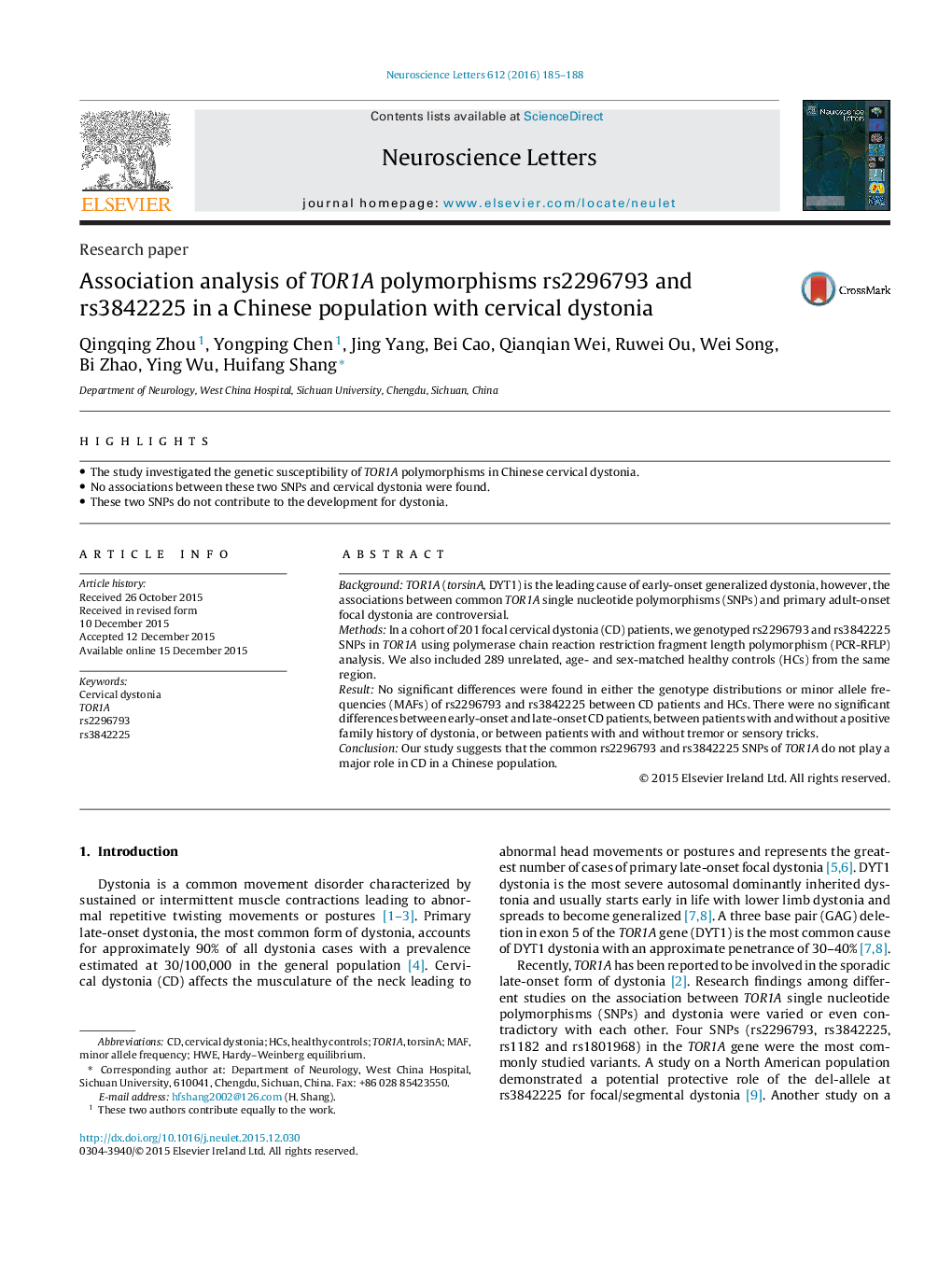| کد مقاله | کد نشریه | سال انتشار | مقاله انگلیسی | نسخه تمام متن |
|---|---|---|---|---|
| 6280091 | 1615087 | 2016 | 4 صفحه PDF | دانلود رایگان |

- The study investigated the genetic susceptibility of TOR1A polymorphisms in Chinese cervical dystonia.
- No associations between these two SNPs and cervical dystonia were found.
- These two SNPs do not contribute to the development for dystonia.
BackgroundTOR1A (torsinA, DYT1) is the leading cause of early-onset generalized dystonia, however, the associations between common TOR1A single nucleotide polymorphisms (SNPs) and primary adult-onset focal dystonia are controversial.MethodsIn a cohort of 201 focal cervical dystonia (CD) patients, we genotyped rs2296793 and rs3842225 SNPs in TOR1A using polymerase chain reaction restriction fragment length polymorphism (PCR-RFLP) analysis. We also included 289 unrelated, age- and sex-matched healthy controls (HCs) from the same region.ResultNo significant differences were found in either the genotype distributions or minor allele frequencies (MAFs) of rs2296793 and rs3842225 between CD patients and HCs. There were no significant differences between early-onset and late-onset CD patients, between patients with and without a positive family history of dystonia, or between patients with and without tremor or sensory tricks.ConclusionOur study suggests that the common rs2296793 and rs3842225 SNPs of TOR1A do not play a major role in CD in a Chinese population.
Journal: Neuroscience Letters - Volume 612, 26 January 2016, Pages 185-188